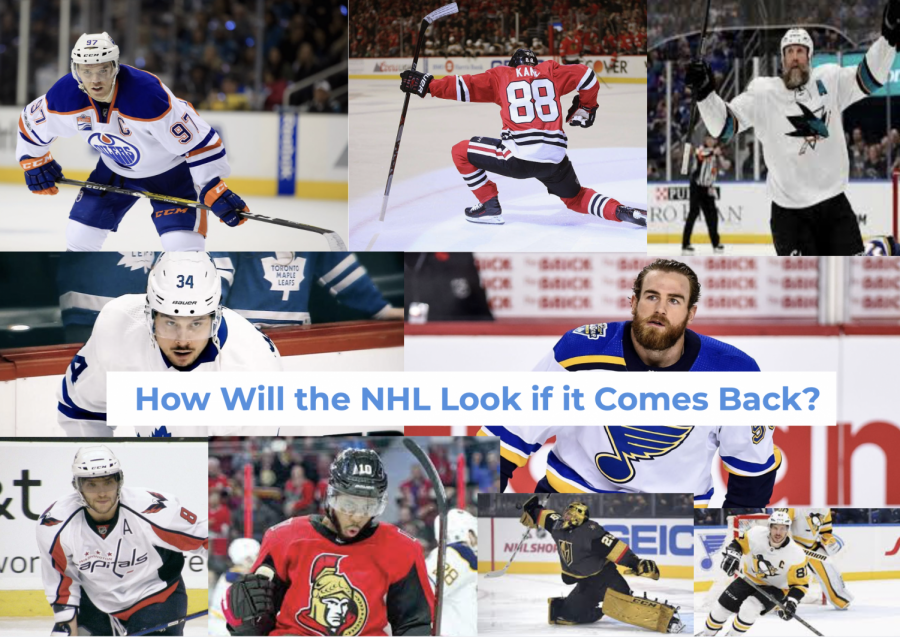Options Are Being Weighed for the National Hockey League’s Uncertain Future
April 11, 2020

2020 has been off to a weird and somewhat trying start for most of us, and now it has only gotten worse. But like most people, the national sports leagues are currently trying to make the best of their situations, and scrap together what they can for a season if they ever come back.
Many leagues are trying to make plans on how they could continue their season. Whether it might be having a small, almost tournament end to the regular season to then transition into the playoffs, or just go straight into the playoffs when they come back, options are being weighed and considered.
The NHL has been adamant into the media that the season is not over, but this is certainly a setback that needs to be dealt with first.
Commissioner Gary Bettman went out and said on March 13th during a phone call that was aired on the NHL Network that he believes in “a credible, sensible way we’ll be able to, at some point, complete the season, get through the playoffs, and award the Stanley Cup.”
That gives us hope, right? Only the slightest amount.
Later during the program, Bettman said, “I don’t see how I could set a timeframe one way or the other. There are people in the medical community charged with governmental decisions that are ultimately going to make the decision as to when it’s safe to occupy our buildings with or without fans. So at the end of the day, a number is just a number. I think it’s better to say ‘Okay, we are taking a pause and we’re focusing on what we need to do when we can come back, when it’s appropriate to come back and safe to come back.’”
If you’re a fan and you hear that you may just think “Wow, they really don’t have a clue,” which is valid. No one knew the extent that it would impact here. We saw what was happening in China and thought that it wouldn’t and couldn’t get like that here in the United States.
One of the main problems with the NHL coming back is simple: what is it going to look like?
Because people now have a lot of free time, there’s been a lot of talk about how it’ll look. Some say that it should be based off of games played, cutting it off at 71 games played which gives a chance to some teams that are on the bubble.
Another idea that was shot around was to skip right to playoff going by points percentage, which is the amount of points a team has divided by the maximum amount of points a team could theoretically have. That would work because most teams that are in playoff positions have a points percentage that would put them there.
But on the other hand, it wouldn’t. The Columbus Blue Jackets and Winnipeg Jets are both in Wild Card spots based on the amount of points they have, but would lose their spot because they have a lower points percentage compared to the New York Islanders and Vancouver Canucks.
These are good ideas, but it’s never going to be a perfect system. Only one team is mathematically eliminated from the playoffs – the Detroit Red Wings, but every other team could still theoretically make a push for the playoffs.
This could be a problem if they resume the season and jump right to the playoffs because every team that was not in a playoff position, especially if they were right on the brink of getting into the playoffs, could simply cry wolf, upset that they didn’t get a final push for the playoffs.
It would just be too difficult to have a perfect system to accommodate the rest of the league. Imagine having to reschedule another mini regular season, and having to re-book all of the venues at the same time as the NBA? Lots of teams have multipurpose arenas, so it would only add to the difficulty.
Other thoughts have been put out there about playing in different venues. This was brought up because if there can’t be people at the games, what’s the point of playing in a huge venue when you can find a cheaper alternative? This was also brought up when the March Madness tournament was still up in arms.
Not much has been said by players or coaching staff as of late on the future of the league. Many have just put out videos informing people to stay inside and do their part to “flatten the curve” to a point in which hockey can return.
Superstar center for the Edmonton Oilers Connor McDavid tweeted a video of him talking about the importance of staying inside and staying safe with the overlying message that we will get through this:
Hey everyone, just a quick message from Lenny and I. Please stay safe out there pic.twitter.com/SsjNsldPIS
— Connor McDavid (@cmcdavid97) March 17, 2020
Another superstar in our backyard, a certain veteran right winger for our very own Chicago Blackhawks released a video on Twitter with the hashtag “#AllInIllinois” to help promote safe habits and social distancing (Chicago teams have coordinated in their spread of social distancing awareness). He ended the message saying that he wants to see people at the United Center soon, and this can’t be done if people are still going out:
I’m #AllInIllinois pic.twitter.com/OrLzFkN3sw
— Patrick Kane (@88PKane) April 6, 2020
Bauer, a very popular hockey company, has even begun to manufacture face sheilds for doctors and nurses on the front lines to use as another level of protection against the virus. This just shows how much the hockey community is rallying in a time of crisis and wants to help as much as they can.
With the Draft and NHL Awards both scheduled for June uncertain at this point, hockey fans can only hope for the best and hope that people do their part to help flatten the curve, not just for the sake of hockey, but for the sake of safety and return of our daily lives that we once took for granted.
While it is still unknown if or when the NHL is going to come back, the one thing for certain is that it’s missed greatly, as is true for all sports. To reiterate what many important figures in the community have said: it’s important that we do our part to help flatten the curve and stay safe so maybe one day we can watch our favorite sports again.






